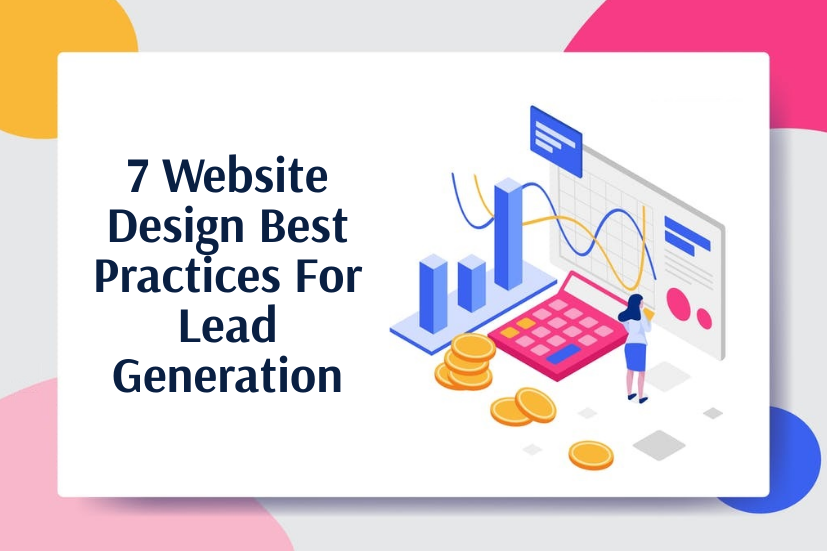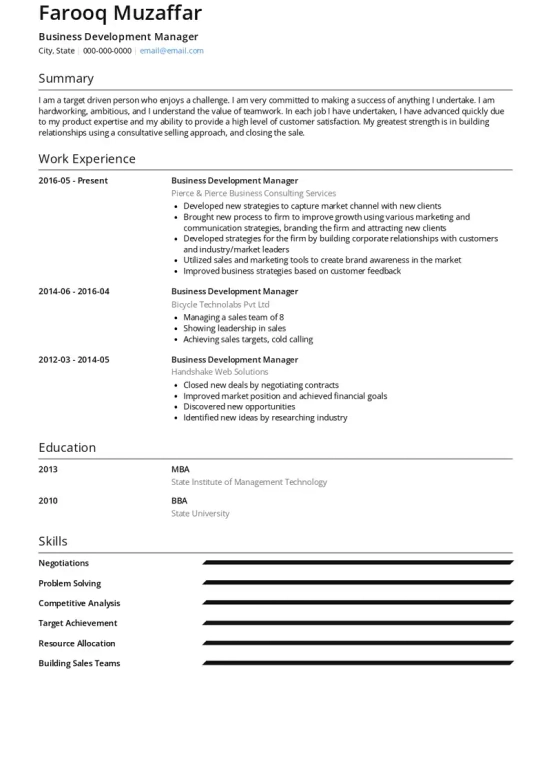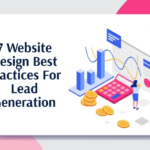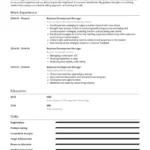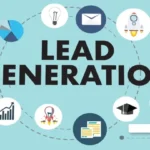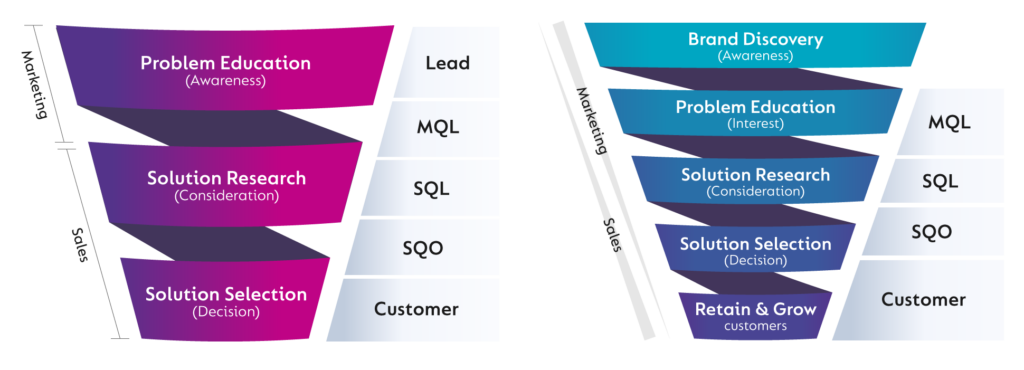
Generating leads is crucial for business growth. A solid lead generation model can transform prospects into customers.
Understanding the lead generation model is key to driving sales and boosting revenue. It involves strategies and techniques to capture interest and convert leads into loyal clients. Companies that master this model often see significant improvements in their sales pipeline.
Whether you are a startup or an established business, refining your lead generation tactics can make a big difference. In this blog post, we will explore what makes an effective lead generation model. We will also discuss the essential components and strategies that can help you attract and nurture potential customers. Get ready to dive into the world of lead generation and discover how it can benefit your business.
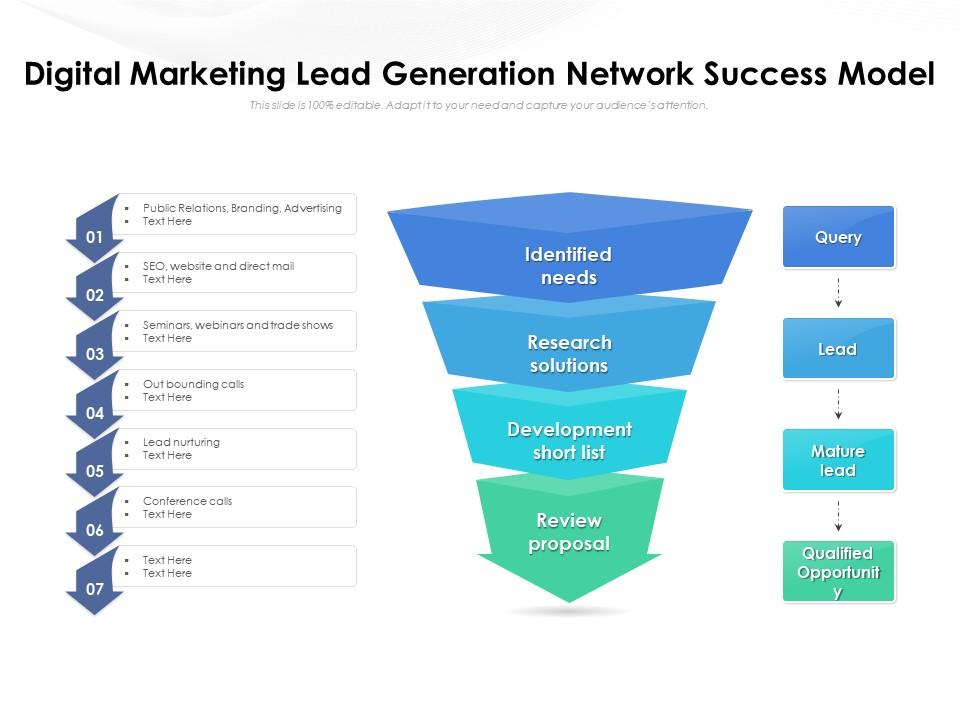
Credit: www.slideteam.net
Introduction To Lead Generation
In the digital age, lead generation is crucial for any business. It involves attracting and converting potential customers. This process helps sustain and grow a company. Effective lead generation can drive revenue and growth.
Importance For Business Growth
Lead generation is vital for business growth. It builds a pipeline of potential customers. This ensures a steady flow of new business opportunities. Companies with strong lead generation strategies outperform competitors.
Here are some key benefits:
- Increases brand awareness
- Boosts sales and revenue
- Enhances customer engagement
- Improves market reach
Common Challenges
Despite its importance, lead generation has challenges. Identifying the right audience can be tough. Crafting compelling content requires creativity and skill. Integrating lead generation with other marketing efforts takes effort.
Here are some common challenges:
| Challenge | Description |
|---|---|
| Audience Identification | Finding the right target market is difficult. |
| Content Creation | Creating engaging and relevant content is time-consuming. |
| Integration | Aligning lead generation with other marketing strategies needs coordination. |
| Lead Nurturing | Maintaining engagement with leads over time can be challenging. |
Understanding these challenges helps in creating effective solutions. Businesses can then tailor their strategies for better results.

Credit: empireflippers.com
Types Of Lead Generation
Lead generation is essential for businesses to thrive. It involves attracting and converting strangers into potential customers. There are two main types of lead generation: inbound and outbound. Each has unique methods and strategies. Understanding these can help you choose the best for your business.
Inbound Lead Generation
Inbound lead generation focuses on attracting potential customers to you. This method uses valuable content to draw in leads. Here are some effective techniques:
- Content Marketing: Creating blogs, videos, and infographics that provide value.
- SEO: Optimizing your website to rank higher on search engines.
- Social Media: Sharing content on platforms like Facebook, Twitter, and LinkedIn.
- Email Marketing: Sending informative emails to a targeted audience.
Inbound lead generation builds trust and credibility. It attracts leads who are already interested in what you offer.
Outbound Lead Generation
Outbound lead generation involves reaching out to potential customers directly. This method is more proactive. Here are some common strategies:
- Cold Calling: Contacting potential leads by phone.
- Email Outreach: Sending personalized emails to prospects.
- Direct Mail: Sending physical mail to targeted audiences.
- Paid Advertising: Using ads on Google, Facebook, or other platforms.
Outbound lead generation can be more immediate. It helps you reach a broader audience quickly.
Both inbound and outbound lead generation have their benefits. Combining both can maximize your lead generation efforts.
Creating A Lead Generation Strategy
Creating a lead generation strategy is essential for any business. It helps in capturing and converting potential customers. A strong strategy can increase sales and grow your business. Let’s explore the key steps to create an effective lead generation strategy.
Identifying Target Audience
Understanding your target audience is the first step. You need to know who your potential customers are. This helps in tailoring your approach. Consider factors like:
- Age
- Gender
- Location
- Interests
- Buying behavior
Create detailed buyer personas. These personas represent your ideal customers. They help in focusing your marketing efforts. Use surveys, interviews, and analytics to gather information. This data ensures your strategy is based on real insights.
Setting Clear Objectives
Setting clear objectives is crucial. These objectives guide your lead generation activities. They help in measuring success. Your objectives should be:
- Specific
- Measurable
- Achievable
- Relevant
- Time-bound
For example, aim to generate 100 new leads in a month. This is a clear and measurable goal. Ensure your team understands these objectives. Regularly review your progress. Adjust your strategy if needed to stay on track.
Creating a lead generation strategy involves identifying your target audience and setting clear objectives. These steps lay the foundation for a successful lead generation model. Stay focused and use real data to guide your efforts.
Content Marketing For Lead Generation
Content marketing is a powerful tool for lead generation. It involves creating valuable content that attracts potential customers. By providing useful information, you build trust and nurture relationships. This approach converts readers into leads. Below, we explore some key strategies for effective content marketing.
Blogging And Seo
Blogging is an essential part of content marketing. Regular blog posts attract visitors to your site. To maximize impact, use SEO techniques. This includes keyword research, on-page SEO, and quality backlinks.
Here are some tips for effective blogging:
- Write about topics your audience cares about.
- Incorporate relevant keywords naturally.
- Use clear headings and subheadings.
- Include internal and external links.
- Ensure your blog is mobile-friendly.
E-books And Whitepapers
E-books and whitepapers are excellent for lead generation. They offer in-depth information on topics that interest your audience. These resources can be gated content. This means visitors provide their contact information to access them.
Consider the following steps to create effective e-books and whitepapers:
- Identify a topic that solves a problem.
- Conduct thorough research and gather data.
- Write clear, concise, and engaging content.
- Design the document to be visually appealing.
- Promote your e-book or whitepaper on multiple channels.
By using these strategies, you can generate quality leads through content marketing. Focus on creating valuable, engaging content that meets the needs of your audience.
Social Media And Lead Generation
Social media is a powerful tool for lead generation. It helps businesses connect with a large audience. With the right approach, you can turn followers into leads. The following sections will guide you on how to use social media for lead generation.
Choosing The Right Platforms
Not all social media platforms are the same. Selecting the best one is key to success.
- Facebook: Ideal for reaching a broad audience. It supports diverse content formats.
- LinkedIn: Perfect for B2B lead generation. Connects with professionals and decision-makers.
- Instagram: Great for visual content. Engages younger audiences effectively.
- Twitter: Useful for real-time updates and quick interactions.
Engaging Content Ideas
Creating engaging content is essential. It attracts and retains your audience’s attention.
- Live Videos: Showcase behind-the-scenes, product demos, or Q&A sessions.
- Infographics: Share valuable information in a visually appealing way.
- Polls and Surveys: Engage followers and gather insights.
- Blog Posts: Share links to informative articles on your website.
- User-Generated Content: Encourage followers to share their experiences.
Make sure your content aligns with your audience’s interests. This increases engagement and lead generation.
Email Marketing Tactics
Email marketing is a powerful tool for lead generation. It connects you directly with potential customers. By using effective email marketing tactics, you can convert leads into loyal clients. Below are some key strategies to enhance your email marketing efforts.
Building A Quality List
A quality email list is essential for successful email marketing. Start by collecting emails from interested users. Use sign-up forms on your website. Offer something valuable in return, like an eBook or a discount. Ensure you have permission to email them. This builds trust and increases open rates.
- Use simple sign-up forms on your homepage.
- Offer incentives like exclusive content or discounts.
- Verify email addresses to reduce bounce rates.
Crafting Effective Messages
Writing effective emails is an art. Keep your messages clear and concise. Use catchy subject lines to grab attention. Personalize your emails to make them relevant. This increases engagement and conversion rates.
- Start with a compelling subject line.
- Use the recipient’s name in the greeting.
- Write clear and concise content.
- Include a strong call-to-action (CTA).
Here’s a simple example of an effective email structure:
Subject: Special Offer Just for You! Hi [Name], We have an exciting offer for you. Get 20% off on your next purchase. Use code SAVE20 at checkout. Don't miss out! Best regards, [Your Company]
By following these email marketing tactics, you can boost your lead generation efforts. Build a quality list and craft effective messages. This will help you connect with potential customers and grow your business.
Utilizing Paid Advertising
Utilizing paid advertising can be a powerful strategy for lead generation. It allows you to reach a wider audience quickly. This method can drive targeted traffic to your landing pages. In this section, we will explore two effective paid advertising methods. These are PPC campaigns and social media ads.
Ppc Campaigns
PPC campaigns are a popular choice for lead generation. PPC stands for Pay-Per-Click. You pay a fee each time someone clicks on your ad. Search engines like Google offer PPC advertising. Your ads appear when users search for related keywords. This ensures your ads reach an interested audience. You set a budget for your campaign. This helps control costs. PPC campaigns can be highly targeted. You can select specific demographics and locations.
Social Media Ads
Social media ads are another effective paid advertising method. Platforms like Facebook and Instagram offer robust ad features. You can create visually appealing ads. These ads can target specific groups based on interests and behavior. Social media platforms have extensive user data. This makes it easier to reach your ideal audience. Social media ads can also increase brand awareness. Users can share and interact with your ads. This can lead to more engagement and potential leads.
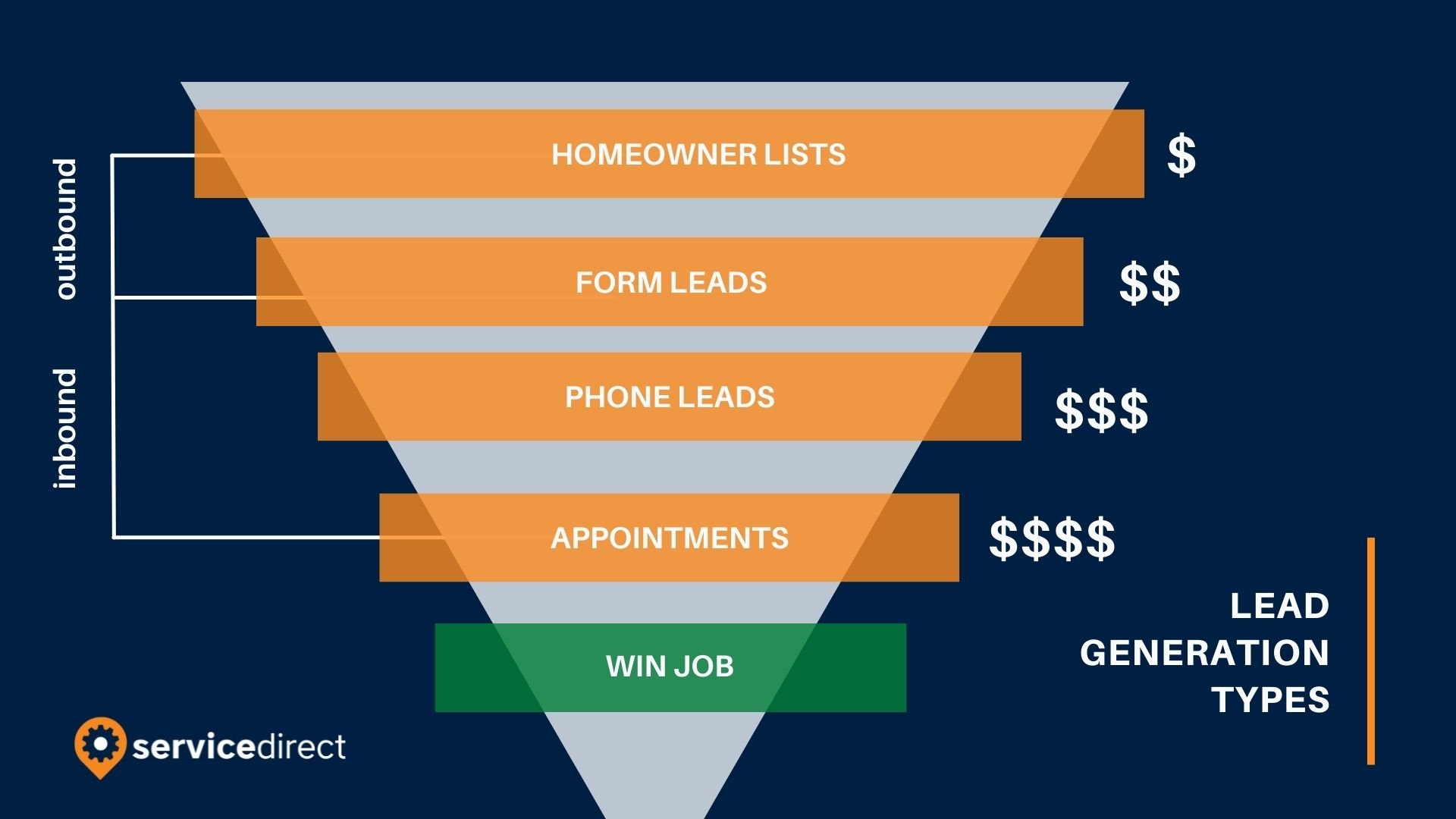
Credit: blog.servicedirect.com
Measuring Lead Generation Success
Measuring lead generation success is essential for evaluating your marketing efforts. It helps you understand what works and what doesn’t. You can then focus on strategies that bring the best results. Accurate measurement also allows you to allocate your resources effectively.
Key Metrics To Track
Tracking the right metrics is crucial. Start with the number of leads generated. Check how many of these leads turn into customers. Conversion rate is another important metric. It shows the percentage of leads that become paying customers. Measuring cost per lead helps you understand the budget efficiency. It tells you how much you spend to acquire each lead. Monitoring these metrics helps you make better decisions.
Using Analytics Tools
Analytics tools can help you measure lead generation success. Google Analytics is a popular choice. It tracks website traffic and user behavior. Another useful tool is CRM software. It tracks leads through the sales funnel. CRM software provides detailed reports. These reports show which marketing campaigns work best. Using these tools can simplify tracking and improve accuracy.
Refining And Optimizing Strategies
Refining and optimizing lead generation strategies is crucial for increasing conversion rates. The goal is to make the process more efficient and effective. By refining strategies, businesses can focus on what works best and eliminate what does not. This process involves continuous testing, collecting feedback, and making necessary adjustments.
A/b Testing
A/B testing helps identify the best strategies for lead generation. It involves comparing two versions of a webpage or form. One version is the control, and the other is the variation. Small changes, like button color or headline text, can make a big difference. By running these tests, businesses can see which version performs better. This helps in making data-driven decisions.
Feedback And Adjustments
Collecting feedback is essential for refining strategies. Feedback can come from customers, sales teams, or analytics tools. This information helps identify areas needing improvement. After gathering feedback, adjustments can be made. These adjustments should be based on the data collected. This ensures that changes are effective and lead to better results.
Regularly refining and optimizing strategies keeps the lead generation process dynamic. It ensures that businesses stay ahead of the competition. By continuously improving, businesses can attract and convert more leads.
Conclusion
A strong lead generation model can transform your business growth. Focus on building trust. Engage with your audience regularly. Offer value through content and resources. Use data to refine your strategies. Keep testing and improving your approach. Consistent efforts lead to better results.
Stay patient and committed. Over time, you’ll see more leads and conversions. Your business will thrive with a solid lead generation model.
